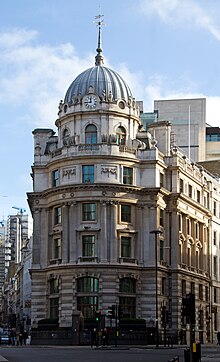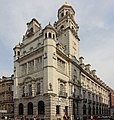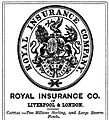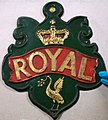
Insurance is a means of protection from financial loss in which, in exchange for a fee, a party agrees to compensate another party in the event of a certain loss, damage, or injury. It is a form of risk management, primarily used to protect against the risk of a contingent or uncertain loss.

Friends' Provident Insurance was a banking institution founded in 1832 to serve the needs of the Society of Friends (Quakers). Based in Bradford, Yorkshire, it concentrated on sickness and annuity policies until its life fund acquired Century Insurance in 1918, expanding into general insurance. The restriction to Quaker membership was an increasing constraint but the ties were substantially reduced by the Friends' Provident Institution Act 1915. Although Century's branch network enabled FPI to expand, the periodic underwriting losses strained the life fund's capital base and Century was sold in 1975. In the year 2000, Friends Provident demutualised and listed on the FT100 Index. After abortive takeover negotiations, Friends accepted a takeover bid from Resolution Limited in 2009.

Prudential plc is a British multinational insurance company headquartered in London, England. It was founded in London in May 1848 to provide loans to professional and working people.

Axa S.A. is a French multinational insurance company headquartered in the 8th arrondissement of Paris. It also provides investment management and other financial services.
Liverpool Victoria, trading since May 2007 as LV=, is one of the United Kingdom's largest insurance companies. It offers a range of insurance and retirement products.
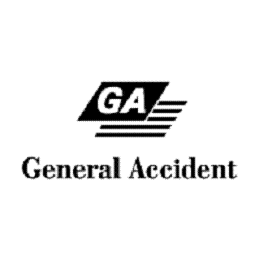
General Accident plc was a large insurance business based in Perth, Scotland. It merged with Commercial Union in 1998 to form CGU plc.

Commercial Union plc was a large insurance business based in London. It merged with General Accident in 1998 to form CGU plc.

The history of insurance traces the development of the modern business of insurance against risks, especially regarding cargo, property, death, automobile accidents, and medical treatment.

Allianz is a German multinational financial services company headquartered in Munich, Germany. Its core businesses are insurance and asset management.

Phoenix Assurance or Phoenix Fire Office was a fire insurance company founded in 1680 in England.

The Royal London Mutual Insurance Society Limited, along with its subsidiaries, is the largest mutual insurer in the United Kingdom, with Group funds under management of over £150 billion. Group businesses provide around nine million policies and employ 4046 people, as of June 2019.
Pelican and British Empire Life Insurance Company was a British life insurance company. It was established in 1797 by Phoenix Assurance as the Pelican Life Office, later the Pelican Life Assurance Company, before merging with British Empire Mutual Life Assurance in 1903 to become the Pelican and British Empire Life Insurance Company.
The Alliance Assurance was formed in 1824. It merged with Sun Insurance in 1959 to form Sun Alliance Insurance.
The Sun Fire Office, later Sun Insurance, was founded in London in 1710 and developed into a leading international insurance business. In 1959, Sun Insurance merged with Alliance Assurance to form Sun Alliance.
London Assurance was an English insurance company founded in 1720, in the midst of the South Sea Bubble speculation. It was acquired by Sun Alliance in 1965 to form the Sun Alliance and London.

The Liverpool Fire & Life Insurance Co. was founded in 1836 in response to increased premiums from the London insurance companies. It expanded rapidly, at home and abroad, and after the acquisition of the London insurer, Globe Insurance, in 1864 it became the Liverpool and London Globe Insurance Company. In 1919 it was acquired by another Liverpool firm, Royal Insurance. The enlarged entity merged with the Sun Alliance in 1996 to form the Royal & Sun Alliance Insurance Group.
Thames & Mersey Marine Insurance was a large British marine insurance company.

British & Foreign Marine was one of the leading marine insurers in Liverpool, England in the second half of the nineteenth century, at one point claiming to have the largest reserves of any marine insurer in Europe. It was acquired by Royal Insurance in 1909 but continued as an independent entity for several decades.
London and Lancashire Insurance was founded in 1862, and had become one of the U.K.'s leading fire insurers by the end of the 19th century. A series of acquisitions in the early 20th century took the company into accident and marine insurance, as well as life assurance, making it a leading composite insurer. Following a period of consolidation in the industry, London and Lancashire was acquired by Royal Insurance in 1962.
Scottish Mutual Assurance was formed in 1883 as the Scottish Temperance Life Assurance Society, intended as the only life assurance company serving exclusively abstainers. It was renamed Scottish Mutual Assurance in 1951 and acquired by Abbey National in 1991.

